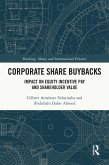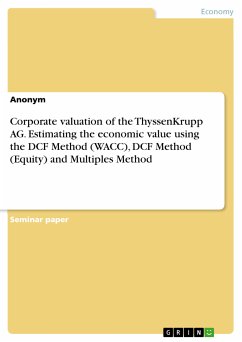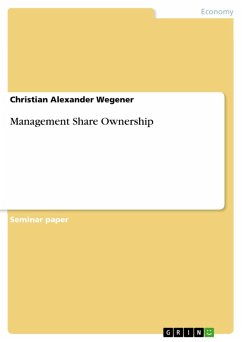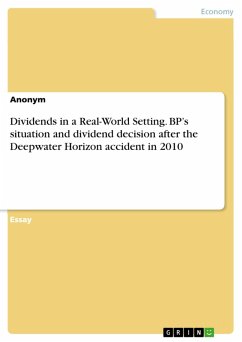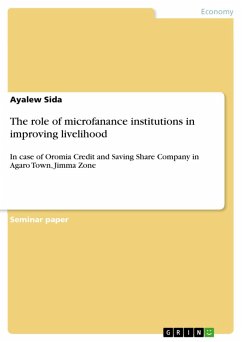Bachelor Thesis from the year 2009 in the subject Business economics - Investment and Finance, grade: 2,3, Berlin School of Economics and Law, language: English, abstract: Beginning with the subprime credit crunch in the USA in late 2007, which subsequently affected financial products all over the world, the global markets entered a period of severe economic downturn. The gravity of this downturn can be seen in the fact that the euro zone entered a recession, i.e., the shrinking of the gross domestic product in two consecutive periods, in late 2008. In this context, recent finance literature (e.g., Rhodes and Stelter, 2009) advises companies to concentrate on cash management. The demand of the hour is to reduce or postpone outflows and guarantee inflows. That is, besides other measures, payouts to shareholders will be reduced. After years of two digit growth rates (Grullon and Michaely, 2002), share buybacks much sooner than dividends will therefore see substantial cutbacks. In Germany, payouts via buybacks have only gained significant importance since 1998 . However, in the short time since then, a great deal of listed companies have been making use of the buyback method. Especially some of the larger firms listed in the DAX 30 such as DaimlerChrysler (7.5 bil. EUR), Deutsche Bank (5 bil. EUR), Münchener Rück (5 bil. EUR) and Siemens (10 bil. EUR) have recently announced sub-stantial buyback volumes (Haslauer, 2008). In this respect Sommer (2007) finds that in the approximately 10 years from the first of May 1998 to the end of 2007 the total amount of repurchased shares accounts for 50 bil. EUR. Using the pause for breath that can be expected during the time of the recession, this text gives an up-to-date overview of share buy-backs as a means of payout. In doing so, the focus lies on the question what motivates companies to pursue a buyback and which advantages in comparison to dividends exist. Furthermore I describe effects of share repurchases, on the announcement day as well as in later periods. In critically evaluating the relevant literature, I describe the multiple motivations for performing buybacks in section 2.1. In order to do so I assign possible reasons to the three interest groups long-term shareholders, managers and short-term shareholders. I then state both legal and methodical requirements with a focus on the German market (2.2.) and show effects as stated in previous literature in part 2.3. An empirical study in part three attempts to give a more recent understanding of market price changes as the result of buybacks performed by German blue chip companies listed in the DAX 30.
Dieser Download kann aus rechtlichen Gründen nur mit Rechnungsadresse in A, B, BG, CY, CZ, D, DK, EW, E, FIN, F, GR, HR, H, IRL, I, LT, L, LR, M, NL, PL, P, R, S, SLO, SK ausgeliefert werden.
Hinweis: Dieser Artikel kann nur an eine deutsche Lieferadresse ausgeliefert werden.



